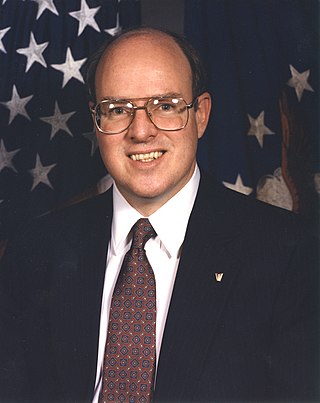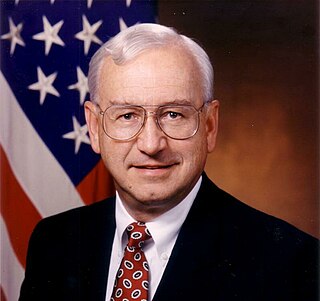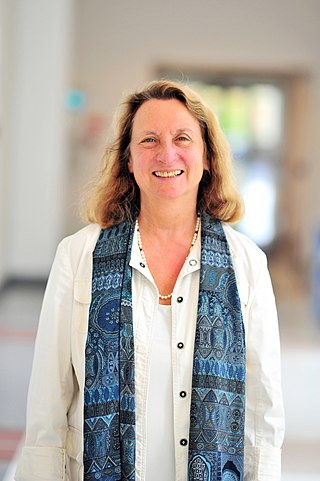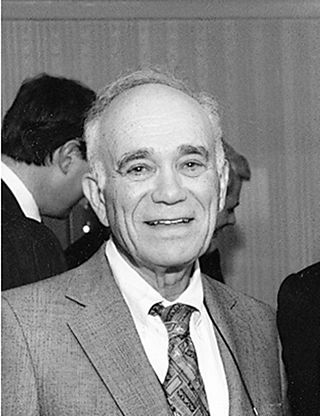
Eberhardt Rechtin was an American systems engineer and respected authority in aerospace systems and systems architecture.
Eugene Edzards Covert was an aeronautics specialist born in Rapid City, South Dakota credited with the world's first practical wind tunnel magnetic suspension system, and was a member of the Rogers Commission. In the 1970s he was the chief scientist of the US Air Force and technical director of the European Office of Aerospace Research and Development.

John D. Anderson Jr. is the Curator of Aerodynamics at the National Air and Space Museum at the Smithsonian Institution in Washington, D.C., Professor Emeritus in the Department of Aerospace Engineering at the University of Maryland, College Park.

Richard P. Hallion is Senior Adviser for Air and Space Issues, Directorate for Security, Counterintelligence and Special Programs Oversight, the Pentagon, Washington, D.C. He is responsible for analysis and insight regarding the conceptualization, evolution and utilization of sensitive national technological programs and related subject areas.

Siva Subrahmanyam Banda is an Indian-American aerospace engineer. He is Director of the Control Science Center of Excellence and Chief Scientist for the Aerospace Systems Directorate at the United States Air Force Research Laboratory at Wright-Patterson Air Force Base. He has taught at Wright State University, the University of Dayton, and the Air Force Institute of Technology.

The Purdue University School of Aeronautics and Astronautics is Purdue University's school of aerospace engineering contained within the Purdue University College of Engineering. The school offers B.S., M.S., and Ph.D. degrees in aeronautical and astronautical engineering. It also provides distance graduate education, including an online M.S. in Engineering with concentration in Aeronautics and Astronautics, and a distance Ph.D. Its main office and some of its labs are located in the Neil Armstrong Hall of Engineering. As of 2010, the School has awarded an estimated 6% of BS degrees and 7% of PhDs in aerospace engineering in the United States.

Robert David Braun is an American aerospace engineer and academic. He has served as the dean of the College of Engineering and Applied Science at the University of Colorado Boulder, the David and Andrew Lewis Professor of Space Technology at the Georgia Institute of Technology, and the NASA Chief Technologist. Currently, Dr. Braun is the Space Sector Head at the Johns Hopkins University Applied Physics Laboratory (APL).
Frederick Stucky Billig was an American aerospace engineer who was a pioneer in the development of scramjet propulsion.

Michael Ihor Yarymovych is President of Sarasota Space Associates, an aerospace consultant providing services to the aerospace industry and government. He is Senior Fellow of the United States Air Force Scientific Advisory Board (SAB) and has served on numerous SAB and Defense Science Board studies. He retired from the Boeing Company in 1998 as Vice President of International Technology in the Information, Space and Defense Systems organization. Prior to the merger of Rockwell International with Boeing he was Vice President and Associate Center Director of the Systems Development Center, which focused the corporation’s resources on new high technology advanced concepts requiring the skills of many divisions. He had joined Rockwell in 1977 as Vice President Engineering of the Aerospace Operations in leadership positions of programs such as the Space Shuttle, Global Positioning System and the B1B strategic aircraft.

Paul Garrett Kaminski is a technologist and former U.S. government official, best known for his leading role in the development of stealth aircraft.

Elaine Surick Oran is an American physical scientist and is considered a world authority on numerical methods for large-scale simulation of physical systems. She has pioneered computational technology to solve complex reactive flow problems, unifying concepts from science, mathematics, engineering, and computer science in a new methodology. An incredibly diverse range of phenomena can be modeled and better understood using her techniques for numerical simulation of fluid flows, ranging from the tightly grouped movements of fish in Earth's oceans to the explosions of far-flung supernovae in space. Her work has contributed significantly to the advancement of the engineering profession.

Prof. Alfred Gessow was an American pioneer in the field of helicopter aerodynamics and aerospace engineering. He was a co-author of the early rotorcraft engineering text Aerodynamics of the Helicopter, which, although published in 1952, has been in print for more than 50 years. Gessow was chair of the Department of Aerospace Engineering at the University of Maryland, College Park, and was ultimately promoted to Professor Emeritus.
John J. Tracy is the retired Chief Technology Officer (CTO) of The Boeing Company, the world's largest aerospace company. At Boeing, he held the dual roles of CTO and Senior Vice President of Engineering, Operations & Technology from June 2006 to mid 2016.
Daniel E. Hastings is an American physicist, currently the Cecil and Ida Green Education Professor and the former director of the Singapore-MIT Alliance for Research and Technology (SMART) at the Massachusetts Institute of Technology. Hastings became head of the Department of Aeronautics and Astronautics on January 1, 2019. He has served as the chief scientist of the US Air Force and on many national level boards.
Jonathan P. How is a Canadian-American astrophysicist and aeronautical engineer currently the Richard Cockburn Maclaurin Professor at Massachusetts Institute of Technology. His current research focuses on technology systems engineering and space engineering.

David W. Miller is an American aerospace engineer who is the current Jerome Hunsaker Professor of Aeronautics and Astronautics at Massachusetts Institute of Technology and an elected Fellow of the American Institute of Aeronautics and Astronautics since 2015. He is currently on a leave of absence from MIT to be a VP and the Chief Technology Officer to The Aerospace Corporation. He has worked on multiple NASA projects and served as NASA Chief Technologist.

Mike Gruntman is a physicist, space engineer, and author. He is professor of astronautics and aerospace engineering at the Viterbi School of Engineering, University of Southern California (USC).
Moriba Kemessia Jah CorrFRSE is an American space scientist and aerospace engineer who describes himself as a "space environmentalist", specializing in orbit determination and prediction, especially as related to space situational awareness and space traffic monitoring. He is currently an associate professor of Aerospace Engineering and Engineering Mechanics at the University of Texas at Austin. Jah previously worked as a spacecraft navigator at the NASA Jet Propulsion Laboratory, where he was a navigator for the Mars Global Surveyor, Mars Odyssey, Mars Express, Mars Exploration Rover, and his last mission was the Mars Reconnaissance Orbiter. He is a Fellow of the American Astronautical Society, the Air Force Research Laboratory, the International Association for the Advancement of Space Safety and, the Royal Astronomical Society. Jah was also selected into the 10th anniversary class of TED Fellows and was named a MacArthur Fellow in 2022. He also was selected into the AIAA class of Fellows and Honorary Fellows in the year of the 50th Anniversary of Apollo 11. The AIAA "confers the distinction of Fellow upon individuals in recognition of their notable and valuable contributions to the arts, sciences or technology of aeronautics and astronautics."

John Francis McCarthy Jr. was an American scientist and engineer. He worked for the Massachusetts Institute of Technology as director of its Center for Space Research; the National Aeronautics and Space Administration (NASA) as the director of its Lewis Research Center; the United States Air Force, where he served with the Strategic Air Command and as a member of the United States Air Force Scientific Advisory Board; North American Rockwell, where he oversaw the design and development of the Apollo command and service module that took the first men to the Moon, and the S-II of the Saturn V rocket. His work doubled, and in the case of the Lockheed C-5 Galaxy, tripled, the service life of aircraft.
Ivett A. Leyva is a Mexican-born American aerospace engineer whose research involves the aerodynamics of hypersonic flight and the use of injectors to modify the airflow around hypersonic aircraft. She is College of Engineering Excellence Professor and head of the Department of Aerospace Engineering at Texas A&M University.













